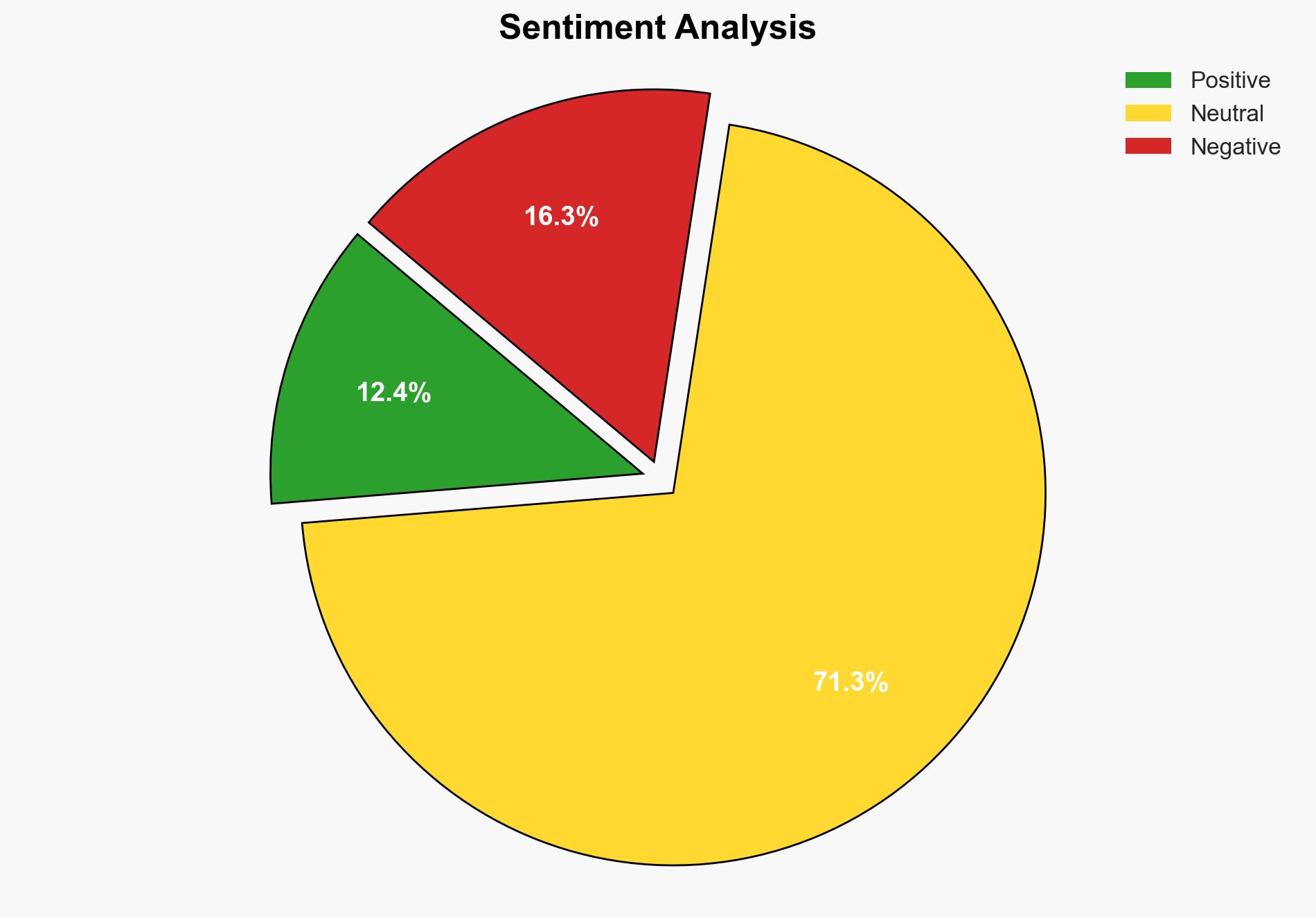Why are the Israel-Hamas ceasefire talks stuck An explainer on the latest – NPR
Published on: 2025-03-17
Intelligence Report: Why are the Israel-Hamas ceasefire talks stuck An explainer on the latest – NPR
1. BLUF (Bottom Line Up Front)
The Israel-Hamas ceasefire talks are currently stalled due to multiple factors, including disagreements over the release of hostages, territorial withdrawals, and political dynamics within Israel. Mediation efforts by regional actors have yet to yield a sustainable agreement. The situation remains volatile, with significant implications for regional stability and humanitarian conditions in Gaza.
2. Detailed Analysis
The following structured analytic techniques have been applied for this analysis:
General Analysis
The ceasefire negotiations between Israel and Hamas are hindered by several key issues:
- Hostage Release: Israel demands the release of hostages held by Hamas, while Hamas conditions this on Israeli troop withdrawal from the Gaza border.
- Political Dynamics: Internal political pressures within Israel, particularly from right-wing factions, complicate the negotiation process.
- Regional Mediation: Efforts by mediators from the United Arab Emirates, Egypt, and other regional actors have not yet succeeded in bridging the gaps between the parties.
- Humanitarian Concerns: The blockade on Gaza has led to severe shortages of essential supplies, exacerbating the humanitarian crisis.
3. Implications and Strategic Risks
The ongoing impasse poses several strategic risks:
- Regional Stability: Continued hostilities could destabilize the broader Middle East, with potential spillover effects into neighboring countries.
- Humanitarian Crisis: The blockade and military actions in Gaza are worsening the humanitarian situation, potentially leading to increased international condemnation and pressure.
- Economic Impact: Prolonged conflict may disrupt regional trade routes and economic activities, affecting global markets.
4. Recommendations and Outlook
Recommendations:
- Encourage diplomatic engagement with key regional players to facilitate a breakthrough in negotiations.
- Consider humanitarian interventions to alleviate the crisis in Gaza, potentially easing tensions.
- Explore confidence-building measures between Israel and Hamas to foster a conducive environment for dialogue.
Outlook:
Best-case scenario: Successful mediation leads to a temporary ceasefire, allowing for humanitarian aid and further negotiations.
Worst-case scenario: Escalation of hostilities results in a broader regional conflict with severe humanitarian and economic repercussions.
Most likely outcome: Continued stalemate with intermittent violence and ongoing diplomatic efforts to reach a resolution.
5. Key Individuals and Entities
The report mentions significant individuals and organizations:
- Benjamin Netanyahu
- Edan Alexander
- Bassem Naim
- Steve Witkoff





